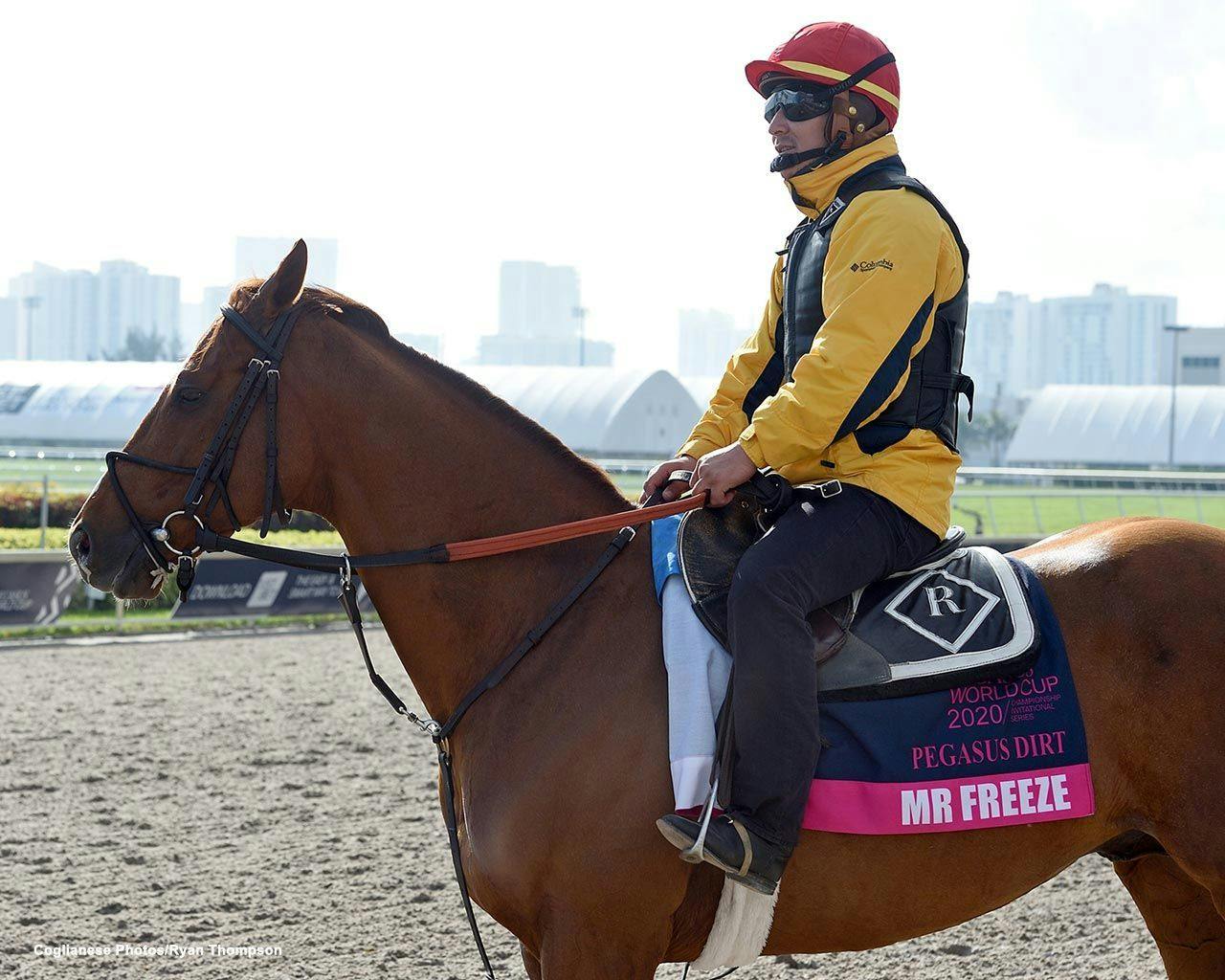Introduction to Workouts: Part 2

Mr. Freeze (Coglianese Photos/Ryan Thompson)
Workouts are a key component of horse racing. Morning training sessions are used to prepare equine athletes for afternoon competitions. On a busy day at a major racetrack, hundreds of horses might record timed workouts.
Understanding the nuances can be tricky for novice bettors. In Part 2 of our Introduction to Workouts series, we’ll discuss three important factors handicappers should keep in mind when analyzing workouts.
Read Part 1 of this series here
Different trainers have different styles
Not every trainer conditions horses the same way, and learning the different approaches utilized by the sport’s top horsemen might be the single most useful factor in analyzing workouts. If you know how a given trainer typically operates, you’ll know what to look for when analyzing the workouts of their horses.
For example, Hall of Fame trainer Bob Baffert works his horses long and fast, giving them stiff workouts to build their fitness and stamina. Workouts over 5, 6, and 7 furlongs are common for Baffert trainees, and if his best horses aren’t cranking out bullet or near-bullet workouts on a consistent basis, it can be a cause for pause.
In contrast, Todd Pletcher—who has won more purse money than any other trainer in North America—prefers to give his horses shorter, slower workouts. Half-mile and 5-furlong workouts in solid but not overly quick times are a staple of Pletcher’s program, though these shorter moves often come with long gallop-outs at a quick pace, making the workouts longer and more testing than official records indicate.
Consistency is important
Remember, the main purpose of workouts is to ensure a horse is fit and ready to run. Fast times are less important than a consistent pattern of workouts, indicating a horse is healthy and progressing smoothly in its training.
For horses racing for the first time or returning from a layoff, one workout per week over the course of six to eight weeks is typically sufficient to prepare them for a race, though some trainers will utilize a dozen or more workouts to ensure their horses are 100% battle-tested and ready to roll.
Once a horse starts racing consistently, they don’t need many workouts to stay fit. A horse running every couple of weeks might go for months without posting a timed workout.
Watch for body language cues
You can learn a lot about young horses by watching videos of their workouts, which are widely available prior to major racing events like the Kentucky Derby and Breeders’ Cup. Keep an eye on their body language to see how they handle certain aspects of racing.
For example, does the horse respond readily to the cues of his rider, or is he too eager to get started, tossing his head and fighting to be let loose? Does he break alertly from the starting gate, or is he sluggish into stride? Does he maintain a straight course down the homestretch, or does he drift around? Does he stay focused on the task at hand, or does he carry his head to one side, as if something else has caught his attention?
Even more conclusions can be drawn when two horses work together (“in company.”) Is the horse you’re watching overeager to take the lead, or does he settle kindly and only accelerate when his rider asks? Does he seem equally effective racing inside or outside his rival? And—most importantly—can he keep up with his workmate, or does he appear overmatched?
Another important factor is lead changes. Horses in North America are trained to lead with their left leg around turns and then switch to lead with their right leg in the straights. For some horses, the transition is smooth, but others struggle to change smoothly or on time. A rough lead change can cause a horse to drift sharply during the transition, potentially compromising their momentum at a key point while racing.
Most of all, remember that horses are individuals, and they don’t all train the same way. Some horses look fantastic working alone in the morning, but can’t replicate their success in afternoon competition. Others seem decidedly dull in the morning, but wake up on race day and outrun their training. Learning the quirks of each horse over time is something of an art form, but one that can produce lucrative rewards at the betting windows.
Good luck!
ADVERTISEMENT



